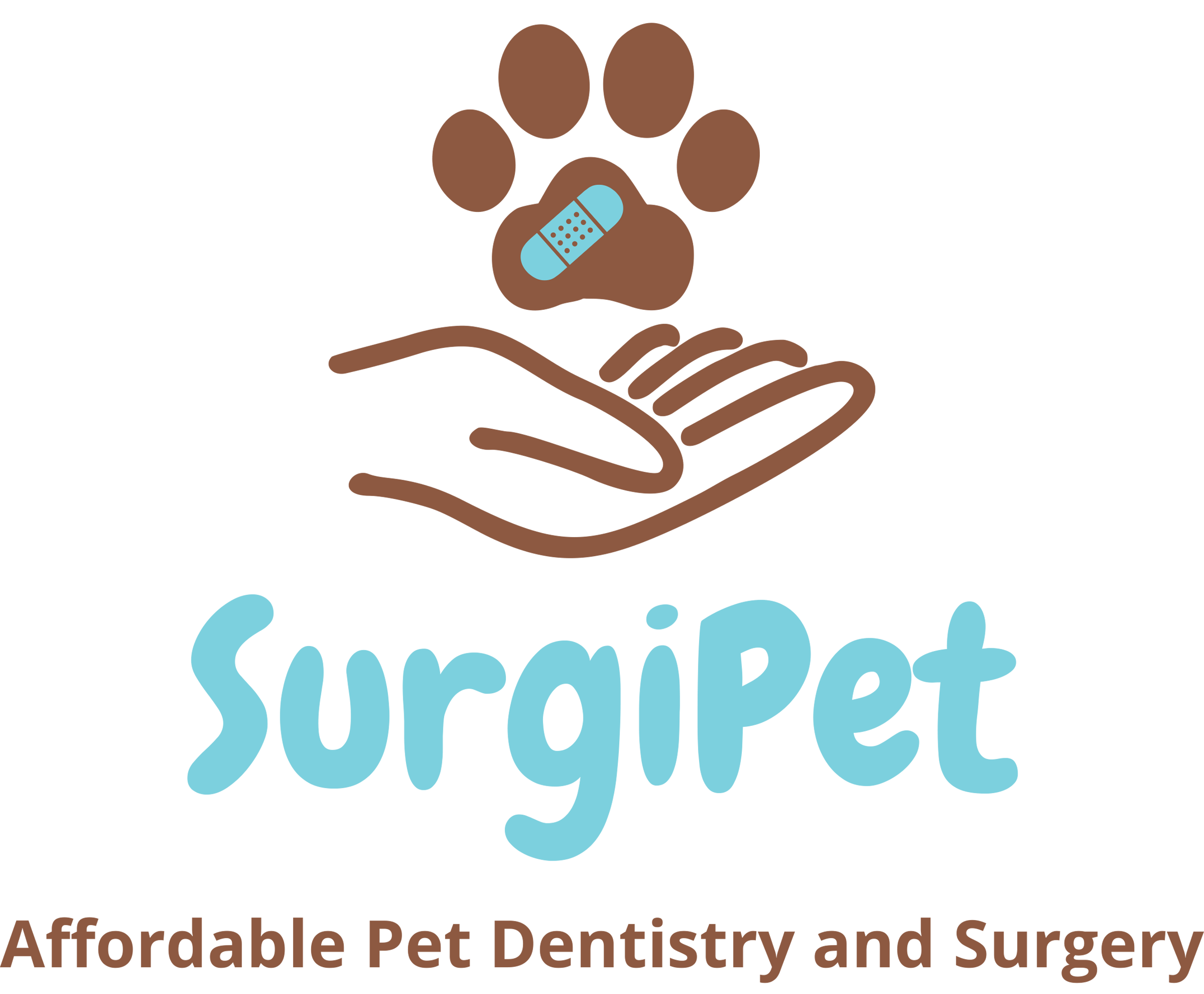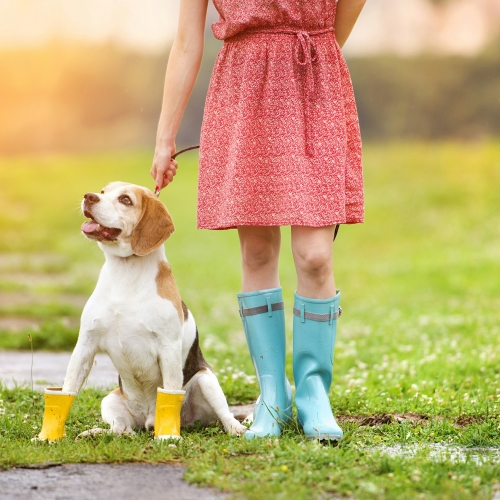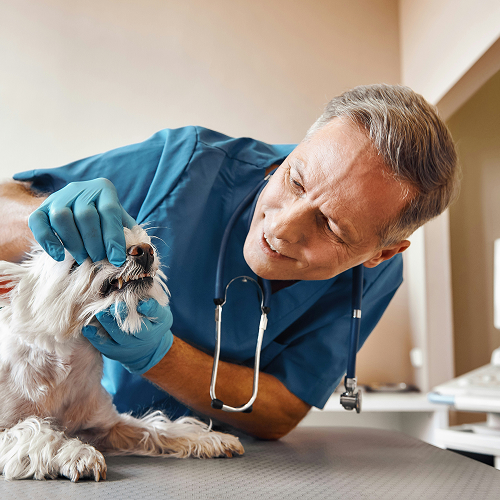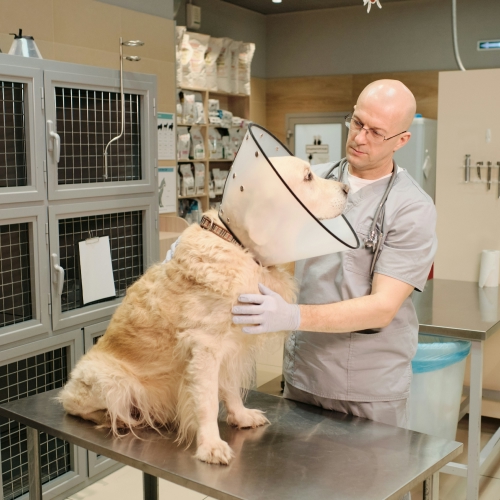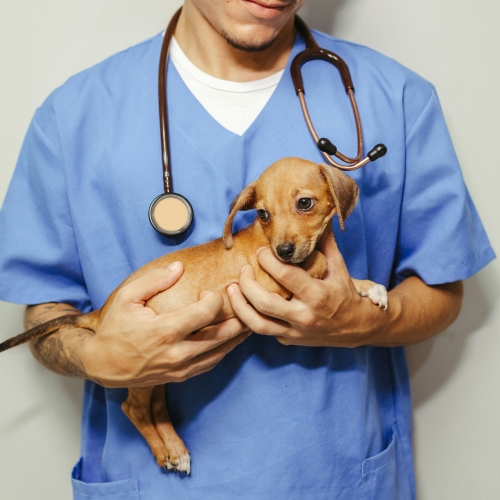SurgiPetACL Knee Surgery
Affordable ACL Knee Surgery for Dogs in Buford, GA
Cruciate Ligament Repair for Dogs in Need
Restore Comfort and Mobility With Expert ACL Surgery
At SurgiPet, we understand how painful and limiting a torn ACL can be for your dog — and how overwhelming the cost of surgery can feel for you. That’s why we offer low-cost ACL knee surgery at our nonprofit clinic in Buford, GA, giving families a trusted, lower-cost option to restore their dog’s comfort, mobility, and quality of life.
Our compassionate team specializes in extracapsular (lateral suture) ACL repair, a proven surgical technique that stabilizes the knee and promotes long-term healing. If your pet is under 45 lbs and suffering from lameness or diagnosed with cruciate ligament rupture, SurgiPet may be able to help, without the financial strain of a specialty referral.
Understanding ACL Injuries in Dogs
The anterior cruciate ligament (ACL) — known as the cranial cruciate ligament in dogs — is one of two ligaments that stabilize the knee joint. Over time, these ligaments can weaken due to wear and tear, especially in active or aging pets. In younger dogs, ACL tears often result from sudden trauma, while in older dogs, degeneration can lead to a rupture during normal activity.
Common signs of a torn ACL include:
- Limping or sudden lameness in a hind leg
- Difficulty rising, jumping, or walking
- Swelling around the knee
- Reluctance to bear weight on one leg
If left untreated, an ACL injury can lead to meniscal damage, joint instability, and progressive arthritis. Over 50% of dogs with an ACL tear in one knee will experience a similar injury in the other leg within a year. Early surgical intervention can significantly reduce pain, prevent complications, and support long-term recovery.
Our Surgical Approach: Lateral Suture ACL Repair
SurgiPet offers extracapsular (lateral suture) ACL repair, a reliable surgical method that uses a synthetic ligament placed outside the joint to stabilize the knee as scar tissue develops. This procedure is best suited for small to medium-sized dogs and remains one of the most commonly performed techniques in general veterinary practice.
What to Expect:
- Sedation and diagnostic X-rays to confirm a diagnosis and rule out other causes of lameness
- Surgical placement of a synthetic ligament to stabilize the joint
- Strict post-op recovery, including exercise restriction for up to 12 weeks to ensure healing
- Follow-up care recommendations based on your dog’s progress
While this is not the most advanced surgical method available, it remains a cost-effective, widely used technique that yields successful outcomes for the right candidates.
Important: SurgiPet only performs ACL surgery on dogs under 45 lbs due to the increased risk of failure in larger breeds. For dogs over this weight, we recommend consulting a board-certified veterinary surgeon for TPLO or TTA procedures.
ACL Surgery Techniques at SurgiPet
At SurgiPet, we offer advanced surgical options tailored to your pet’s size, activity level, and specific orthopedic needs. Our team is experienced in two highly effective techniques for treating cranial cruciate ligament (ACL/CCL) injuries in dogs:
Extracapsular (Lateral Suture) Technique
This time-tested procedure is best suited for small to medium-sized dogs under 45 pounds. It involves placing a strong synthetic ligament outside the knee joint to provide immediate stability. Over time, the body naturally forms scar tissue that helps reinforce the joint, supporting long-term mobility and comfort. This minimally invasive technique is a reliable option with a generally shorter recovery period for appropriately sized pets.
TPLO (Tibial Plateau Leveling Osteotomy)
Recommended for large or highly active dogs over 45 pounds, TPLO surgery changes the dynamics of the knee joint by reshaping the tibia to eliminate instability. During the procedure, the top of the tibia is cut, rotated, and secured with orthopedic-grade plates and screws. This advanced technique offers exceptional stability and long-term success for active dogs. Before scheduling TPLO surgery, an orthopedic consultation and sedation-based X-rays are required to ensure the best outcome for your pet.
Frequently Asked Questions
How do I know if my dog needs ACL surgery?
If your dog is limping, favoring one leg, or showing signs of pain in the hind limbs, they may have a torn ACL. A thorough exam and diagnostic imaging — often under sedation — can confirm the diagnosis.
What happens if I delay treatment?
Delaying surgery can result in worsening pain, joint instability, meniscal injury, and long-term arthritis. Early stabilization supports better healing and less joint damage over time.
What’s the recovery process like?
Your dog will need 12 weeks of restricted activity, including leash walks and no jumping or running. This healing time is crucial to allow scar tissue to develop and reinforce the knee.
